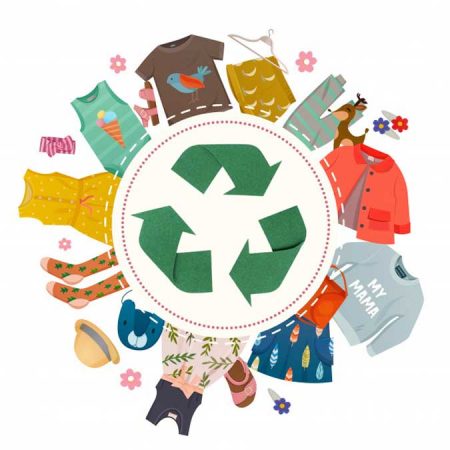TEXTILE presents sustainability challenges as the world moves to a more circular economy, but recent trends provide an opportunity to surpass these.
“The initial challenges are almost insurmountable, but we’re starting to chip away at that,” said Andrew Dent, executive vice-president for research of Material ConneXion, a New York-based materials consultancy. In a presentation on sustainable material trends at the recently held TELA Conference 2021, he gave examples related to reduced waste from digital manufacturing, new performance treatments, dyeing technologies, leather and cotton-free alternatives, and end-of-textile-life practices. “These innovations are small-volume. That’s the concern. How do we take these innovations and have them end up as larger volume solutions for the market?”
SUSTAINABLE MATERIAL TRENDS
A way to reduce textile waste that has emerged is 3D (three-dimensional) or digitized knitting, where items are produced by inputting design information into a program, and a machine knits the information using only the needed materials. Companies that use the technology include the Swedish furniture company Ikea, which uses it for one of its chairs.
Meanwhile, Dutch dyeing technology supplier DyeCoo has a waterless dyeing solution that is able to infuse dye particles into an entire bolt of fabric. “Pigments fall like water, even though they’re still like gas, then go through the fabric so zero water is needed,” said Mr. Dent. “It dyes entire bolts in one go with zero water, but does require more of a capital investment. These are not small machines.”
Material manipulation is another growing trend in the textile industry. Liquid silk, for one, is a water-based, non-animal protein source that is being used to create a coating on other lower cost, readily available fabrics. The resulting fabric has the feel of silk without the need to actually produce it from silkworms. Meanwhile, mushrooms are being utilized by San Francisco-based startup MycoWorks to produce leather-looking membranes. “Although not having quite the same durability as real leather, it does have the same look and feel, and composts safely at the end of its material life,” Mr. Dent said.
One problem is what happens to textiles after they’ve come to the end of their usefulness. Brands such as OSOM use upcycled yarns from discarded garments to reduce textile waste. The company pulls fabrics apart through a machine that maintains the fabric’s fiber length and thus integrity.
As Mr. Dent explained, “The challenge with recycling natural fabrics such as cotton is that they’re made of individual fibers that are spun together. When you chop those fibers up, the less strong the resulting fabric is. OSOM is able to pull fabrics while maintaining 80% of the fiber length of those yarns.”
SHIFTING TO A CIRCULAR ECONOMY
Shifting to a circular economy requires asking the right questions. Textile upcycling, for instance, may be sustainable — but you need to be careful about what you do with it, Mr. Dent told the audience at the conference. Solutions need to be localized and not labor intensive. “If you can upcycle, produce new products, and use renewable energy, then you have your solution. We don’t want to put out so much plastic material out there in the world.”
A three-pronged approach involving the consumer, the brand, and the government is also necessary to spark a shift to a circular economy.
“Consumers need to want to purchase products that are circular. Brands need to offer circular options. The government and other institutions need to provide the infrastructure that allows materials to be recycled and reused,” Mr Dent said. “Without a combination of these three, it’s not gonna work.” — Patricia Mirasol

